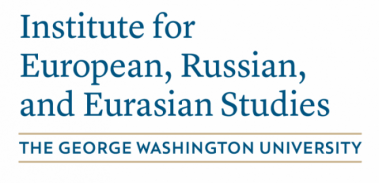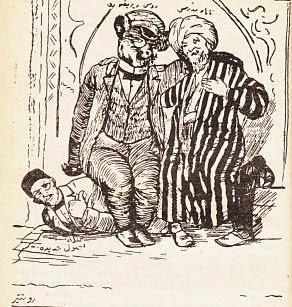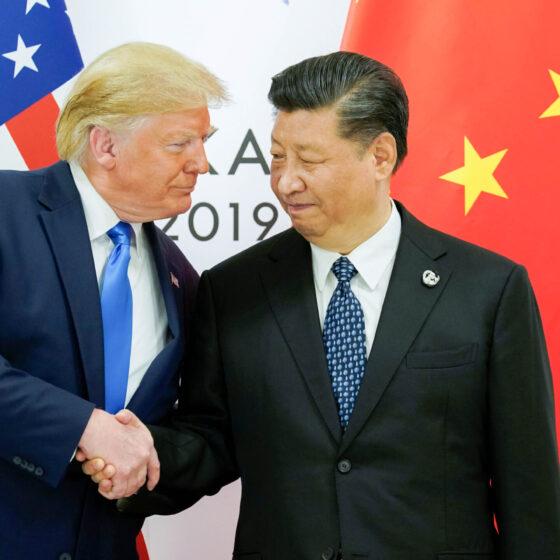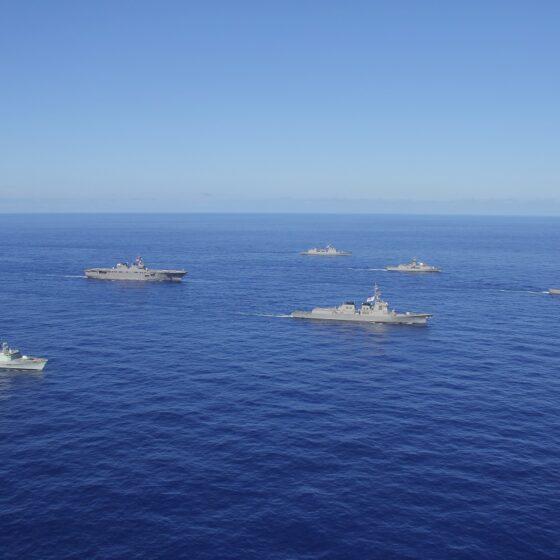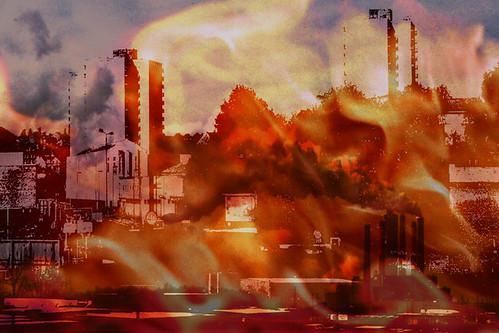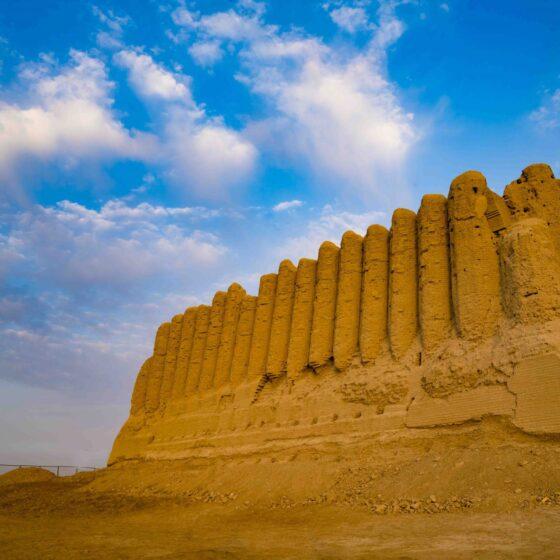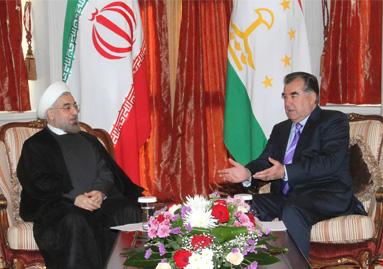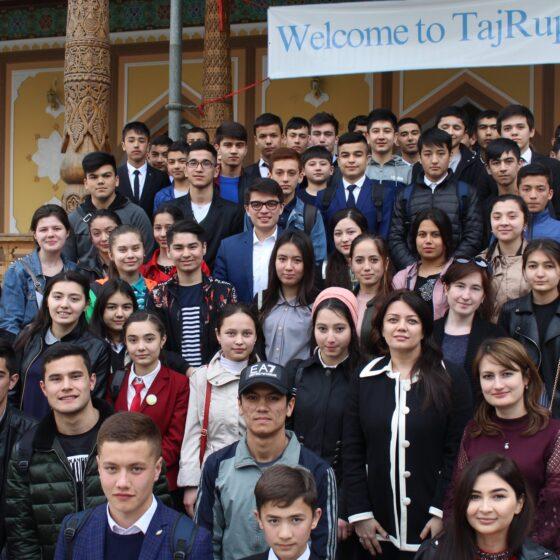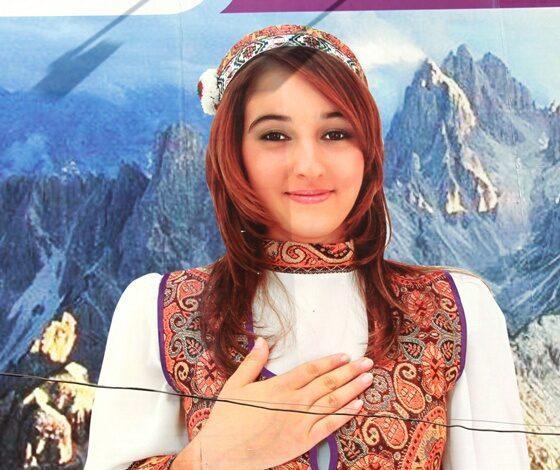By Sophie Roche
Modern Tajik schoolbooks devote a mere two pages in Class 9 and ten pages in Class 11 to the civil war (1992 and 1997). Compare this to World War II (also known as the Great Patriotic War), to which ten pages are dedicated in Class 9, twenty-seven pages in Class 10 and nine pages in Class 11. In Class 11, pupils learn that the civil war was the result of the sudden emergence of several political parties, all of which scrambled for power and took up arms against the ruling government. The categories utilised contain an unmistakeable message: a single party system and a strong leader guarantees peace, while political opposition can easily turn into a threat to social harmony.
Софи Рош о войне в Таджикистане: «“В груди у матери-шахида все еще было молоко”
The peace agreement during the Day of National Unity (Ruzi Vahdati Milli) on June 27 is increasingly celebrated as the victory of one party over any other opposition. While this politics did not hinder the production of various narratives, it established a view of the civil war that young people have integrated. This view includes that women were all victims of the civil war, which was fought among men. The mythos continues with the claim that there are four times more women than men because of the civil war.
Civil war death causes are amongst the most imprecise data, researchers found all over the world. This is also true for Tajikistan where the number vary between 50 000 and 500 000 civil war causalities. I have conducted micro-census in several areas hit by the civil war and the death rates are slightly higher for the civil war particularly with regard to children. More importantly, however, my findings showed that not the number of deaths is the problem, but the age of the person. The death of a young man in age of marriage or a young husband is a tragedy for families as he is the heir, the son who takes care of the elderly parents, the husband of a wife, and the father to children. Similarly, the death of a young mother is tragic for her children. Death is not expected to happen in young age and hence increases the feeling of loss. In this sense the experience of death is not the same as numbers and numbers will do little to cure this loss. At the same time, the mythos that civil wars produce primarily male deaths has led to assumption that for each man come four women. This number of having four times more women than men is taken from a religious view of society (according to Islamic scholars a man may marry up to four wives, a rule that was introduced by the prophet after wars so to make sure women do not remain without male head) but has no foundation in Tajikistan. The reality is that migration has produced a large number of abandoned women, not the civil war death rate of men.
Wars have gendering effects on society. Not only in history books heroic male narratives (brave soldiers, politicians, fighters, peacemakers, and etc.) dominate the analysis, but also in society women’s accounts of war experiences are valued less than the speech of men. When I was studying the local history of a village in Rasht, I could observe how men tried to give me a historical account in which local occurrences would link to political development. In this story men were fighting, were taking decision and were making history. In contrast, women would prefer to delegate me to male village authorities in order “to learn about local history”. It turned out that women’s stories were richer in details about the civil war, more precise and gave an impression of the difficulties the civil war created with regard to shortage of food, the lines of conflict, the experience of death of relatives and many other aspects that shape life during a conflict.
Tajikistan is not an exception here, but can be compared to many other countries and societies. In Germany, for instance, World War II ended with a destroyed country that had to be rebuilt. Women, known as Trümmerfrauen (Pohn-Weidinger), were the ones that started to clean the cities. Later, they retreated into the household and Germany developed into one of the more conservative countries in Europe with regard to gender roles, Elaine Martine has suggested. Violence against wives and children turned into a widespread post-war phenomenon in German families and has marked a whole generation, known as the “geprügelte Generation” (beaten-up-generation) as Müller-Münch has outlined. Also, in Germany people believed that the stories of grandmothers about the war were less important to history than the experiences of grandfathers at the front, the researcher Helle Bjerg and Claudia Lenz discovered in their article “If only grandfather was here to tell us.” Similarly, in Tajikistan post-civil war society used gender as the way to establish order (Roche), which went along with increasing domestic violence against women, an observation that researchers such as Shahrbanou Tadjbakhsh and Muborak Sharipova have done.
However, the conceptual rescue to conservative gender rules clashed with the reality of life in which men (unlike in Germany) were not able to perform as only breadwinner in most families. Many women came hence to be seen responsible for a stable society if they conformed to conservative gender roles but in reality had to close the countless gaps that had shaken society including financial care for children. Women now manage households in absence of migrant husbands, supervise the education of girls and boys, look after the fields and animals, and participate in collective duties in the village.
Women in War
The role of women in civil war can have many shades. Some women in Tajikistan even joined the ranks of fighters, yet, these are relatively few. One woman reported that the leader of a mujahed group she had been taken to, had accepted her as daughter and hence no man was allowed to touch her. Within this group women were responsible to cook while she would run through the mountains with the fighters “so to keep them motivated,” she explained. Most parents tried to hide their daughters in order to avoid that they would be taken as wives or fighters. Girls spend time in the mountains, in haystacks, in caves, in cellars, in dark rooms, even in trees. In contrast, their mothers were among the most mobile persons. They would cross lines, move among groups and take responsibility for relatives and other people.
Let us take, for instance, Gulbibi, whose son disappeared in September 1994. She began to ask whether somebody had seen him, drove to Dushanbe where he had last been and searched everywhere. No place, no building, no mullah remained without investigation; for four months she searched him. Then, one day, she got a note that he was in Hakimiyon, Rasht valley, and she went to search there. She had to change her way to dress and her dialect and she found other mothers who helped her in this matter. She walked to the mountains and found the warlord that her son had joined. She talked to him, told him stories, gave promises and when she was permitted to meet him, her son did not want to come with her. Again she talked, cried and persuaded him to come and visit his father. Leaving a military group would mean death, so they had to leave without being seen. Later they had to cross many military posts, from the opposition and from pro-state military groups. Each time she changed the uniform of her son to make him pass unharmed; she changed her dialect, and developed the skills of crossing hostile lines. And she brought back her son from war! Gulbibi was not an exception but one of many mothers who rejected the war and brought back their sons from hands of warlords, whether from pro-state military groups or from the opposition.
Another mother explained how they walked for five hours to the next village where humanitarian help had been delivered in order to bring back a bit of flour to feed the children. Their village was isolated and starved by the pro-state groups because they believed mujaheds were hiding there – as if the villagers were able to solve the conflict. Women and children suffered most during this period and long after the peace agreement had been signed – by men! Mothers had developed ways to hide food from the fighters and invented dishes to calm the hunger of children. Many stories show that mothers did not care about political ideologies, they solidarized and helped each other. One mother told me how one day she had to cross a post known as “the butcher” and a man was staying a kilometer before this post. Any enemy would be killed at this post. This man could not cross because he could be considered as an enemy to the people controlling the post. So the mother, who came from the same region as the fighters at the post, took him with her and declared him a relative. This way he passed the post unharmed. Without these mothers the number of dead would have been even higher and peace impossible. Until today mothers are the main group of people to retain their sons from joining military groups or jihad in Syria.
Women have also been victims of the war. Young women were kidnapped or taken for marriage by force, and rape was used as a mean to harm the enemy. In civil wars the body of a woman can become the possession of a group, of a clan or tribe such as in Somalia or of political parties as in Tajikistan. To harm or protect this body can turn into a goal of the group fights with terrible harm for the concerned women. Also in Tajikistan many women had traumatized experiences that time will not heal. Children have seen their mothers and sisters being raped before their eyes, their husbands and sons taken from them and killed, or they have been blamed simply for speaking the wrong dialect. One mother had her husband killed by pro-state militant fighters although he had never taken a gun, then she was visited by the same fighters who spend the night at her place. She was left without honour, without breadwinner, social excluded and remained deeply traumatized from these experiences. Until date there has been no program to help women deal with this trauma, with the social exclusion that they experienced because of the harm done to their body during the civil war. Reconciliation has remained a political festival, which ignores the everyday reality of the civil war and the way women have been affected.
The experiences of the civil war by these mothers are important to understand the political development and the efforts to re-gender society after the war. Like in many other post-war traumatized societies, it is mothers who first began to work the fields anew, who went out to take a job to feed the family and who forgave the young men and husbands for their violence. Whoever travels Tajikistan will be amazed to see women cleaning the streets, working in the fields, taking care of municipal gardens and streets and run many offices – women run the country. In contrast to the reality of everyday life, the national narrative has established strong gender images. The president, as the father of the nation, decides about the clothing of women in public (dress only), the height of the heels of their shoes, their exclusion from mosques and the position in society. In a similar rhetoric have members of other parties called for clear gender divides and the Islamic Revival Party along with many other religious movements has used religion to ground their concept of femaleness.
Female responses to the war
How did women deal with the civil war memories? The trauma of the civil war remains strong among women, some of them experiencing social exclusion on daily base. Other mothers have died without ever getting to know whether their son was dead or alive, or what had happened to him. Girls live with the memories of hunger and fear and the sadness for each dead relative, classmate or co-villager. However, there has also been forgiving from the part of mothers who consider the civil war a “bad game of youth” run under the supervision of ignorant leaders. Women are the forgotten group of the peace talks, but they have raised their voices in many ways. Today women work on bazaars along men as successful traders; they work in schools, as excellent journalists, in supermarkets and in public services. Many have discovered Islam as a way to claim rights and respect and as a source of self-awareness. They respond to conservative views of Islam that demand women to stay at home by covering their body in public and leaving home. These practical responses to the patriarchal national narrative have transformed society from within. In Liberia Ellen Johnson Sirleaf was the first president elected after 15 years of civil war in 2006. Oinikhol Bobonazarova was not elected and could not run for presidency due to counter-efforts, but she had become the favorite presidential candidate of several opposition parties in 2013.
Women have also given literary responses. Diary and poetry have been two channels for women to work on their pain in absence of medical help and political acknowledgement. A young girl of fourteen years had written a diary in a remote village of Rasht; she documented the village events, transformed pain and grief into poetry and is today mother of four girls. Her dream was to become a journalist, but “time did not allow me to go for studies”. She is only one among many women who wish to share their experiences, reflections, observations and also their grief and anger with the world. Gulruhsor, a famous Tajik poet, for instance, presented a collection of texts and poetry in her book called “Woman and War” and dedicated it to those mothers and daughters, who have experienced the pain of war.
“Mothers never sang about war, violence and heroicity at the cradle. Among the hundreds of injured soldiers, no one ever called ‘father’ before dying,” M. Nurullo explains in his poem.
Women in Tajikistan are associated with peace, even more, women claim peace as a value of femaleness, so why are their voices still kept silent? The poetry of women is however not heroic, but full of pain, of memories, death and grief. The association of motherhood with peace, reproduction and maintenance of life (against the sense of destruction of fighters) is also presented in the next literary text. This literary piece elevates motherhood even above death:
“A man together with four family members, among them, small children was soaking dry bread in cold water. One portion of bread, one cup of water was all the family had on this day of sacrifice.
In this house everybody was hungry, also the newly born baby. The mother did not have milk. The baby was angry, cried, at times it was taken the breast of the mother, than leave it.
The breast of the mother was pierced from the teeth of the child, as if it was bread. In this situation they found death. A group of armed people entered the house and shot the family, then left…
The next day people entered, and saw with their own eyes the terror of the broken world. An entire family was laying in blood and a baby innocent of the world was quietly searching for the breast of his mother. The breast of the shahid mother had milk.” (M. Saidova)
Bibliography
Bjerg, H. and C. Lenz 2008. “‘If Only Grandfather Was Here to Tell Us.’ Gender as a Category in the Culture of Memory of the Occupation in Deumark and Norway” in The Gender of Memory. Cultures of Remembrance in Nineteenth- and Twentieth-Century Europe. S. Palatschek and S. Schraut (eds.). Frankfurt: Campus, pp. 221-236.
Gulrukhsor, 2003. Zan va Jang. Bishkek.
Martine, Elaine. 2007. “Is war gendered? Issues in representing women and the Second World War.” Pp. 161-174 in Production, reproduction and communication of armed violence. The practice of war, edited by A. Rao, M. Bolling, and M. Böck. New York, Oxford: Berghahn.
Müller-Münch, Ingrid 2012. Die geprügelte Generation: Kochlöffel, Rohrstock und die Folgen. Stuttgart: Klett-Cotta.
Pohn-Weidinger, Maria, 2012. Heroisierte Opfer: Bearbeitungs- und Handlungsstrukturen von “Trümmerfrauen” in Wien. Wiesbaden: Springer.
Roche, Sophie. 2012. “Gender in narrative memory. The example of civil war narratives in Tajikistan.” Ab Imperio 3: 279-307.
— 2016. A sound family for a healthy nation. Motherhood in Tajik national politics and society. Nationality Papers 44(2): 207-224.
Sharipova, Muborak. 2008. “One more war against women: Historical and socio-cultural aspects of violence against women in Tajikistan.” Pp. 67-94 in Gender politics in Central Asia. Historical perspectives and current living conditions of women, edited by C. Hämmerle, N. Langreiter, M. Lanzinger, and E. Saurer. Weimar, Vienna: Böhlau.
Sharipova, Muborak and Fabian, Katalin. 2010. “From Soviet Liberation to Post-Soviet Segregation Women and Violence in Tajikistan.” Pp. 133-170 in Domestic Violence in Postcommunist States, edited by K. Fabian. Bloomington and Indianapolis: Indiana University Press.
Tadjbakhsh, Shahrbanou. 1994. “Women and war in Tajikistan.” Central Asian Monitor 1: 25-29.
